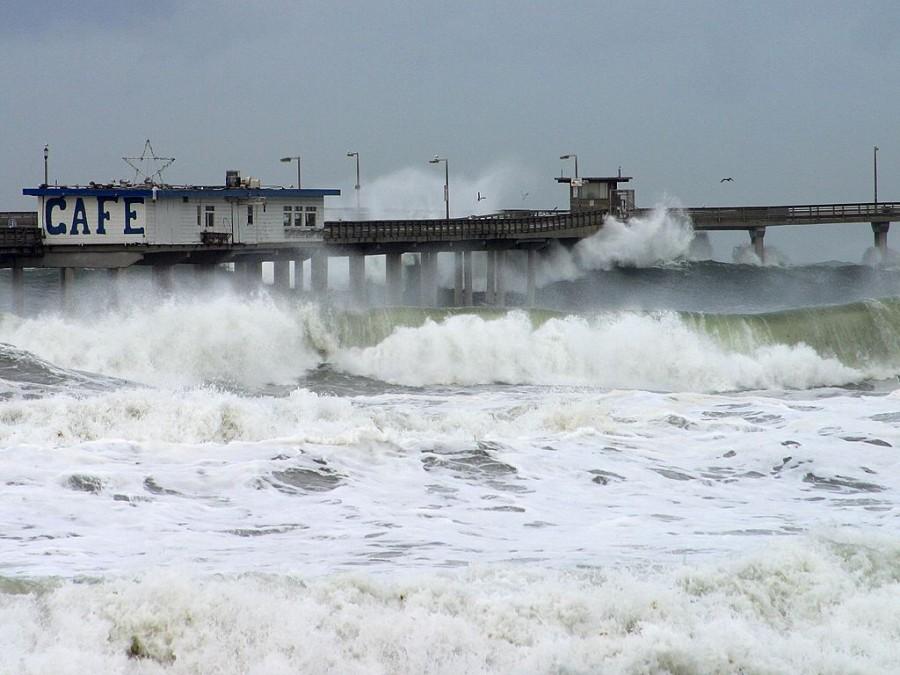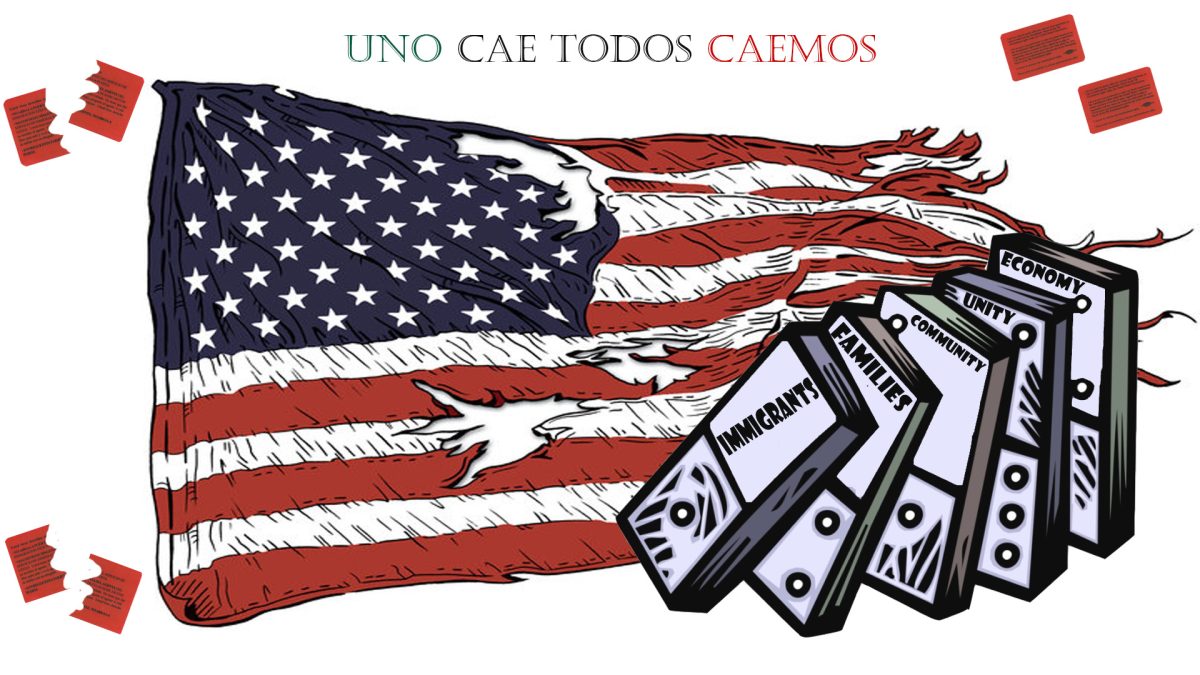El Niño storms due to flood valley early next year
A storm causes massive waves to crash into a dock. Storms are expected when El Niño arrives in Southern California early next year.
December 14, 2015
With El Niño coming, the school district has implemented new regulations for plant managers to follow, such as ensuring that storm drain basins are clean and free of debris. They are also in charge of problems such as relocating faculty and students if El Niño gets too severe.
“At home, I think I’m safe,” counselor Martina Torres said. “I’m just worried about leaks in the classrooms.”
El Niño, a natural occurrence that temporarily affects weather patterns, has created an active and abnormal hurricane season in the eastern Pacific Ocean and will bring heavy rains this winter.
This year’s El Niño reportedly will bring plenty of rain to Southern California in January.
El Niño happens when water surface temperatures become warmer than normal in the Pacific Ocean on the coasts of Peru and Ecuador. This is provoked by the weakening of trade winds in South America that are usually directed toward Asia.
El Niño influences weather patterns around the world, such as droughts in Indonesia, Africa and Australia and is able to cause severe weather in the Americas, such as flash floods, hurricanes and typhoons.
These weather patterns aren’t really predictable but they tend to happen every two to seven years, lasting about 18 months. Many refer to it as a “super” El Niño.
The National Oceanic and Atmospheric Association (NOAA) predicts that this El Niño has over a 90 percent chance to be one of the strongest on record. Since 1950, there have been only two other El Niños of this magnitude, one recorded in 1982-1983 and another in 1997-1998.
“I’m concerned about the car crashes because it’s wet and slippery,” junior Chester Castro said.
The two previously recorded “super” El Niños caused above average rainfall in Los Angeles. However, it will take more than one wet winter to pull California out of the drought. Another problem is that if Southern California receives more rain than Northern California, the rain won’t be very helpful for the drought. Most of California’s water supply comes from Northern California.
“My biggest concern is that we are not going to get enough water for the drought,” junior Kyle Peraza said.
These weather patterns don’t only affect California, they affect the whole country. A strong El Niño creates wet winters for the southern half of the United States and the northern half of the country will see less rain and less snow in the Northeast. With an El Niño this strong, extreme weather is to be expected later on.
This weather phenomenon has some benefits, though. When a strong El Niño is present, heavy winds present themselves in the tropical Atlantic, which reduce the number of tropical storms and hurricanes. Northeastern North America also experiences warmer conditions, which helps make sure that cities like Chicago won’t experience record-breaking snow again. There are also reduced tornado numbers, as shown by a recent study done by the International Research Institute for Climate and Society.
This weather phenomenon also affects sea life and birds. It reduces the upwelling of cold water on American coasts, which causes fish to either die or migrate to areas where they will find food to eat. This causes birds that relied on these fish to die or move elsewhere.
Flooding and landslides are serious threats in this upcoming El Niño. It is typical to see heavy downpour and mudslides in Southern California with strong rain.
“My concern is people living in lower elevation and how the homeless are going to deal with that,” junior Viviana Rodriguez said.








